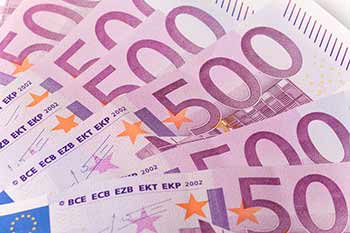During European trading, the Euro to New Zealand Dollar (EUR/NZD) exchange rate was holding onto gains made during the Australasian session.
Although the Euro came under pressure yesterday as the ZEW economic sentiment surveys for the Eurozone and Germany came in below expected levels, the common currency was able to stage a rebound against the ‘Kiwi’ after economic reports from New Zealand surprised.
The Euro to NZD exchange rate was able to hit a high of 1.5599 after New Zealand’s Consumer Price Index for the second quarter fell short of forecasts.
The nation’s Consumer Price Index came in at 0.3% in the second quarter of 2014 (quarter-on-quarter). A reading of 0.4% had been expected.
On an annual basis, New Zealand’s CPI came in at 1.6%, up modestly from the 1.5% year-on-year figure recorded in the first quarter but less than the 1.8% expected.
The result led to some industry experts betting that the Reserve Bank of New Zealand will delay before increasing interest rates again.
In the view of forex trader Stuart Ive; ‘The market has been pricing in a 90% chance of a rate hike next week. That is called into question when you combine the milk price falling off a cliff, house price inflation starting to pull back and a market caught somewhat left-sided by weaker CPI data.’
New Zealand Dollar losses were also the result of news that the GlobalDairyTrade Price Index dropped by 8.9%.
As dairy products are New Zealand’s main export the result weighed on the commodity-driven ‘Kiwi’.
However, New Zealand Dollar losses were a little limited as data for China (one of New Zealand’s main trading partners) surpassed expectations.
While China’s retail sales figures came in slightly below projected levels, the nation’s industrial production report impressed and growth data showed expansion of 2.0% in the second quarter, QoQ.
Quarterly growth of 1.8% had been expected.
On an annual basis the Chinese economy grew by 7.5%.
The Euro to New Zealand Dollar exchange rate also trimmed gains slightly during the European session after the Eurozone’s Trade Balance report disappointed.
The EUR/USD pairing was struggling on Wednesday as investors fixated on Fed Chairwoman Janet Yellen’s hints regarding the timeline for increasing interest rates. During her semi-annual address to the Senate Committee Yellen intimated that interest rates might be increased sooner than currently projected if the US economic recovery continues at a comparatively rapid pace.
Further movement could be occasioned by today’s US Industrial Production and Manufacturing Production figures.
It wasn’t all bad news for the Eurozone on Wednesday either, as Portugal’s central bank calmed fears regarding the solvency of the nation’s banking sector and helped bonds and shares in Banco Espirito Santo SA rise.
According to credit analyst Tom Jenkins; ‘The Governor’s comments have helped reassure the market that a bail-in of the bonds probably won’t be necessary. It’s hearsay for the moment but it’s certainly helpful.’
On Thursday movement in the Euro to New Zealand Dollar (EUR/NZD) could be caused by New Zealand’s consumer confidence/business confidence reports and final inflation figures for the Eurozone.
Euro (EUR) Exchange Rates
[table width=”100%” colwidth=”50|50|50|50|50″ colalign=”left|left|left|left|left”]
Currency, ,Currency,Rate ,
Euro,
Euro,
Euro,
Euro,
Euro,
[/table]
